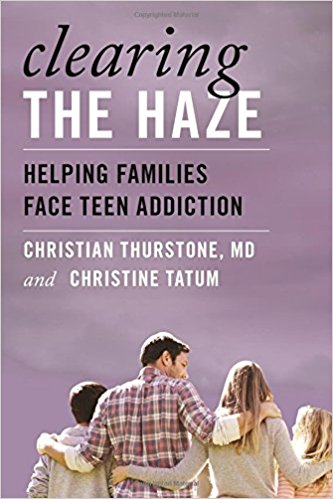After many months of rigorous review that included careful evaluation of the world body of science, the Obama administration’s Drug Enforcement Administration announced today that marijuana’s Schedule 1 drug classification will remain intact, and the number of sites allowed to grow the drug for research will expand.
The decision is consistent with a 2015 federal court opinion from the Eastern District of California. Guidance from Bertha Madras of Harvard University, who was on a panel providing expert testimony, significantly shaped that federal opinion.
As Dr. Madras explained to the court last year, there are five legal standards that must be met to permit the shifting of marijuana (or any scheduled substance) from Schedule I to Schedule II or lower. All five of these questions would have to be answered affirmatively:
- Does marijuana have a known and reproducible drug chemistry?
- Does marijuana have adequate safety studies?
- Are there adequate and controlled studies showing marijuana’s efficacy?
- Are marijuana’s therapeutic benefits accepted by qualified experts?
- Are scientific data available for scrutiny?
Additionally, for marijuana to remain in Schedule 1, experts also must be able to show that marijuana has:
- A high potential for abuse
- No currently accepted medical use in treatment in the United States
- Unacceptable safety standards for its use under medical supervision.
After extensive review, the Obama administration concluded marijuana does not meet the requirements for re-classification. In an unusual move, DEA Acting Administrator Chuck Rosenberg sent a detailed letter explaining the decision to the governors of Rhode Island and Washington, who had petitioned for the drug’s rescheduling. Rosenberg opened the letter by addressing a common misunderstanding about the country’s drug scheduling process (Editor’s Note: italicized emphasis is ours):
“Schedule I includes some substances that are exceptionally dangerous and some that are less dangerous (including marijuana, which is less dangerous than some substances in other schedules). That strikes some people as odd, but the criteria for inclusion in Schedule I is not relative danger.
“In that sense, drug scheduling is unlike the Saffir-Simpson scale or the Richter scale. Movement up those two scales indicates increasing severity and damage (for hurricanes and earthquakes, respectively); not so with drug scheduling. It is best not to think of drug scheduling as an escalating ‘danger’ scale — rather, specific statutory criteria (based on medical and scientific evidence) determine into which schedule a substance is placed.”
“We’re pleased to see that the Obama Administration — using the exhaustive ‘eight-factor’ scientific analysis required by law — understands the science the way we and almost every single major medical association in the country understand it,” said Kevin Sabet,” president of Smart Approaches to Marijuana (Disclosure: Dr. Christian Thurstone is a medical advisor to this nonprofit organization.). “Big Marijuana was counting on President Obama to reschedule or even deschedule marijuana, to circumvent the FDA process so it could turn a quick profit on unregulated products. But this decision means medications based on marijuana will have to go through the same rigorous testing process as all of our other medications.”
The new federal rules announced today also expand legitimate research opportunities by increasing the number of legal grow sites for research-grade marijuana beyond the current facility operated in partnership with the University of Mississippi. The move is expected to help speed research of CBD and other components of marijuana and to streamline the process for data collection.
DEA officials said entities outside the University of Mississippi will be invited to seek licensure to grow research-grade marijuana — and the number of licenses awarded will be limited and the rules for qualification strict. The DEA also said it will give priority to manufacturers that have followed its rules and have a track record for honoring laws related to work with controlled substances — which means producers of so-called “medical marijuana” already operating in several states may not be accepted into the expanded, federally approved research market.
“Under the new approach, should the state of scientific knowledge advance in the future such that a marijuana-derived drug is shown to be safe and effective for medical use, pharmaceutical firms will have a legal means of producing such drugs in the United States — independent of the (federal) contracting process,” the agency stated.
In 2015, SAM recommended several steps for bolstering marijuana research without legalization, including an expansion of research sites. So far, three of SAM’s six recommendations have been adopted.
“The pot lobby has successfully fought off federal attempts to regulate advertising targeting children, rules restricting the use of pesticides, and rules to limit marijuana potency. This same lobby was ready to pounce on a rescheduling or descheduling determination to fill their pockets,” said Jeffrey Zinsmeister, Executive Vice President of SAM. “This assault on health and safety regulations is no less than a repeat of Big Tobacco’s tactics from last century — which if people recall once touted the health benefits of tobacco use. That is what makes today’s news so important.”
Christine Tatum is a veteran journalist and former national president of the Society of Professional Journalists who writes frequently about marijuana and public policies related to the drug (see this editorial series she helped produce for The Gazette in Colorado Springs). She is also Dr. Thurstone’s wife. Together, they co-wrote Clearing the Haze: Helping Families Face Teen Addiction. You can contact her through this website.


We welcome all thoughtful comments, but please abide by our commenting rules